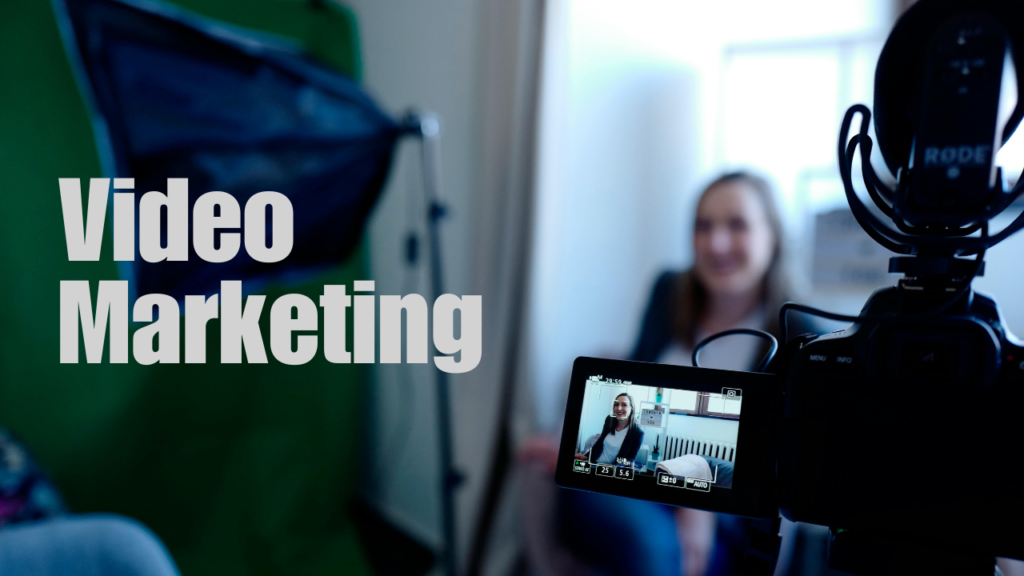Introduction
In today’s digital age, having an online presence is essential for businesses, entrepreneurs, and even individuals looking to build their personal brands. Digital marketing is the key to establishing and expanding this presence. If you’re a beginner looking to understand digital marketing and how to use it effectively, this guide will walk you through the fundamentals, strategies, and best practices to help you get started.
What is Digital Marketing?

Digital marketing refers to the use of online platforms, tools, and strategies to promote products, services, and brands. Unlike traditional marketing, which relies on TV, radio, and print media, digital marketing leverages the internet and digital channels to reach and engage a targeted audience.
Key Components of Digital Marketing:
- Search Engine Optimization (SEO)
- Content Marketing
- Social Media Marketing (SMM)
- Pay-Per-Click Advertising (PPC)
- Email Marketing
- Affiliate Marketing
- Influencer Marketing
- Marketing Automation
- Video Marketing
- Mobile Marketing
- Web Analytics and Performance Tracking
- Conversational Marketing & Chatbots
1. Search Engine Optimization (SEO)

SEO is the process of optimizing your website to rank higher on search engines like Google. Higher rankings result in increased organic traffic, meaning more people discover your content, products, or services without paid advertising. Digital marketing and SEO goes hand in hand.
Key SEO Strategies:
- Keyword Research: Identifying terms your audience searches for.
- On-Page SEO: Optimizing website content, meta tags, and URLs.
- Off-Page SEO: Building backlinks from reputable websites.
- Technical SEO: Improving website speed, mobile-friendliness, and security.
- Local SEO: Optimizing for local searches and Google My Business.
- Voice Search Optimization: Optimizing for voice-based searches using conversational keywords.
Case Study: How SEO Helped a Small Business Grow
A small bakery in New York used SEO strategies such as local keyword optimization, Google My Business updates, and high-quality content creation. Within six months, their website traffic increased by 120%, and their revenue grew by 45%.
SEO Tools:
- Google Keyword Planner
- Ahrefs
- SEMrush
- Moz
- Yoast SEO (for WordPress users)
2. Content Marketing

Content marketing involves creating valuable and relevant content to attract, inform, and engage an audience. This includes blog posts, videos, infographics, podcasts, e-books, whitepapers, and case studies.
Why Content Marketing is Important:
- Builds trust and credibility
- Increases website traffic
- Supports SEO efforts
- Helps generate leads and conversions
- Encourages audience engagement and brand loyalty
Best Practices:
- Create high-quality, informative content
- Use a mix of content formats (text, video, images)
- Be consistent in publishing
- Use storytelling to make content engaging
- Optimize for SEO
- Repurpose content across different platforms
Case Study: The Power of Blogging
HubSpot, a marketing software company, increased its lead generation by 55% through consistent blogging and high-quality content creation. They focused on answering common customer queries and providing valuable insights, which helped establish them as an industry leader.
3. Social Media Marketing (SMM)

Social media marketing involves using platforms like Facebook, Instagram, Twitter, LinkedIn, TikTok, YouTube, and Pinterest to promote content and engage with audiences.
Popular Social Media Platforms and Their Benefits:
- Facebook: Best for ads, brand awareness, and community building.
- Instagram: Ideal for visuals, influencer marketing, and stories.
- Twitter: Great for trending topics, customer support, and updates.
- LinkedIn: Best for B2B marketing and professional networking.
- TikTok: Useful for short-form video content and brand virality.
- YouTube: Ideal for long-form videos, tutorials, and brand storytelling.
- Pinterest: Great for visual content, especially in fashion, food, and lifestyle niches.
SMM Strategies:
- Post consistently and engage with followers
- Use high-quality images and videos
- Utilize hashtags strategically
- Run paid promotions and collaborations
- Monitor analytics to refine strategy
- Use social media management tools like Hootsuite or Buffer
Case Study: Starbucks’ Social Media Success
Starbucks uses social media to engage customers through storytelling, user-generated content, and promotional campaigns. Their seasonal campaigns, such as the Pumpkin Spice Latte launch, generate massive engagement and sales.
4. Pay-Per-Click Advertising (PPC)
PPC is a paid marketing strategy where advertisers pay a fee each time their ad is clicked. Google Ads and Facebook Ads are the most commonly used platforms.
Types of PPC Ads:
- Search Ads: Appear on Google search results
- Display Ads: Appear on websites and apps
- Social Media Ads: Run on Facebook, Instagram, LinkedIn, etc.
- Retargeting Ads: Target users who visited your site before
- Shopping Ads: Show products directly on Google results
- Video Ads: Run on YouTube and other platforms
PPC Best Practices:
- Choose the right keywords
- Create compelling ad copy
- Optimize landing pages
- Monitor and adjust campaigns based on performance
- Use A/B testing for better ad performance
Case Study: How Amazon Masters PPC Advertising
Amazon uses PPC extensively to promote products on its platform. By leveraging keyword bidding, retargeting, and automation, Amazon has significantly increased its product sales.
5. Email Marketing
Email marketing involves sending promotional emails to a targeted audience. It is a cost-effective way to nurture leads and retain customers.
Benefits:
- High return on investment (ROI)
- Direct communication with customers
- Personalization increases engagement
- Automated campaigns save time
Best Practices:
- Build an email list organically
- Use engaging subject lines
- Personalize emails for better results
- Include clear calls-to-action (CTAs)
- Automate email sequences for efficiency
- A/B test email campaigns
Case Study: Airbnb’s Personalized Email Marketing
Airbnb uses personalized emails to recommend travel destinations based on user preferences. This strategy has significantly increased their booking rates.
6. Video Marketing

Video marketing involves using videos to engage audiences, boost conversions, and improve brand visibility.
Video Marketing Strategies:
- Create engaging product demos and tutorials
- Use live streaming for real-time interaction
- Optimize videos for SEO with proper titles and tags
- Repurpose video content across multiple platforms
Case Study: Dollar Shave Club’s Viral Video Campaign
Dollar Shave Club created a humorous and engaging video campaign that went viral, leading to thousands of new subscribers overnight.
7. The Future of Digital Marketing
With advancements in AI, AR/VR, and data analytics, digital marketing is evolving rapidly. Businesses must adapt to trends such as voice search, personalization, and interactive content to stay ahead.
Key Trends to Watch:
- AI-powered chatbots and automation
- Virtual and augmented reality marketing
- Interactive and gamified content
- Personalization using big data analytics
- Blockchain for transparency in digital ads
Conclusion
Digital marketing is an ever-evolving field that provides endless opportunities to grow your online presence. By leveraging SEO, content marketing, social media, and other digital strategies, businesses and individuals can effectively reach and engage their target audience. Start small, be consistent, and continuously learn to stay ahead in the digital marketing game.
Want to learn about SEO and boost your rankings? Check out our SEO guide!
Follow us on instagram